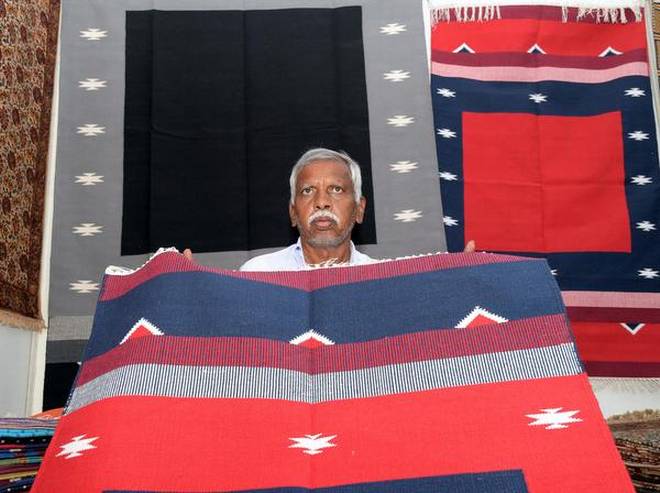
Marketing the carpets directly can lead to better profits for the struggling sector in Telangana.
There’s a ripple of excitement and sliver of hope in Warangal’s artisan community as word spreads on the Geographical Indication certificate given on March 28 by the Chennai-based GI Registry for Warangal dhurries.
“We had to do all our business through the handloom society. But now, with the GI tag, we will be able to market our products on our own, leading to better profits,” says Adepu Ramesh of Kothawada in Warangal, a crafts-centred location in the city. Only last year, some of the carpet sellers here began using online platforms to sell their products. The shatranji carpets and jainamaaz prayer mats made in Warangal range in size from the smallest 2 feet by 3 feet to a massive 60 feet by 90 feet, examples of which are seen in some museums.
Bright colours, geometrically repetitive patterns and interlocking zigzag motifs in cotton and jute are the signature styles of the carpets.
One of the newest innovations by the weavers here is an adaptation of tie-dyed ikat techniques and hand-painted or block-printed kalamkari designs for the dhurries to save time and energy.
“We weave a plain carpet and send it to Machilipatnam and Pedana [famous for the kalamkari style] for colouring based on the design given by us,” says Mr. Ramesh.
‘No’ for family trade’
It takes two days labour by two expert craftsmen to create a 6 feet by 9 feet carpet that sells for Rs. 2,000. “If the design is intricate or made-to-order then the cost goes up,” says Adepu Ravi, who uses pit looms to weave the carpets.
“I am expecting better business, especially if export orders pick up with the GI tag. Over the past 25 years, business has fallen drastically. I am doing 20% of the business that I was doing back then. I am insisting that my children focus on education rather than the family trade,” says Mr. Ravi.
Interestingly, for the Great Exhibition of 1851 in London, two carpets woven in silk were sent from Warangal. They held a place of pride among over one lakh exhibits, which included the fabled Koh-i-Noor diamond.
Today, the bright red and yellow carpets are housed in London’s Victoria and Albert Museum.
source: http://www.thehindu.com / The Hindu / Home> News> Cities> Hyderabad / by Serish Nanisetti / Hyderabad – April 24th, 2018